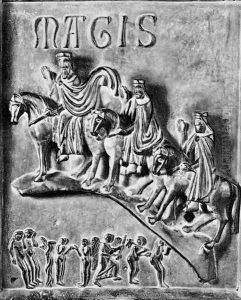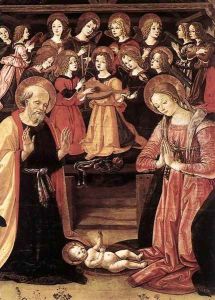Bonanno Da Pisa Paintings
Bonanno da Pisa is an Italian sculptor and architect whose life details are largely shrouded in mystery, including the precise dates of his birth and death. What is known about Bonanno comes primarily from the records of his works, which suggest he was active around the late 12th century, particularly between 1180 and 1200. He is most famously associated with the city of Pisa, a vibrant center of art and architecture during the Medieval period, which played a significant role in the development of Romanesque art and architecture in Italy.
Bonanno's most renowned contribution to the world of art and architecture is the original door panels he created for the Pisa Cathedral. These bronze doors, completed around 1180, are considered some of the earliest major works of bronze sculpture in Italy since the Roman times, marking a significant moment in the revival of monumental bronze casting. Despite the destruction of these doors in a fire in 1595, they are known from descriptions and partial replicas, which highlight Bonanno's skill in combining narrative relief panels with decorative motifs, embodying the Romanesque style's characteristic fusion of form and function.
Another significant work attributed to Bonanno da Pisa is his involvement in the construction of the Leaning Tower of Pisa. Although historical records are not unanimous, Bonanno is often cited among the architects who may have initially worked on the tower's construction, which began in 1173. The tower's early engineering miscalculations, leading to its famous lean, were not directly attributed to him but to the challenging subsoil conditions on the site. Nevertheless, Bonanno's association with this iconic structure, whether as its architect or as a contributor to its early stages, ties his legacy to one of the most recognizable symbols of medieval Italian architecture.
The lack of comprehensive historical records makes it difficult to sketch a detailed biography of Bonanno da Pisa, including the exact years of his birth and death. However, his contributions to the Pisa Cathedral and his possible involvement in the early stages of the Leaning Tower's construction have secured his place in the history of medieval art and architecture. Through his work, Bonanno da Pisa exemplifies the innovative spirit of the Romanesque period, which laid the groundwork for the flourishing of Gothic architecture and the Renaissance art movement that followed.

